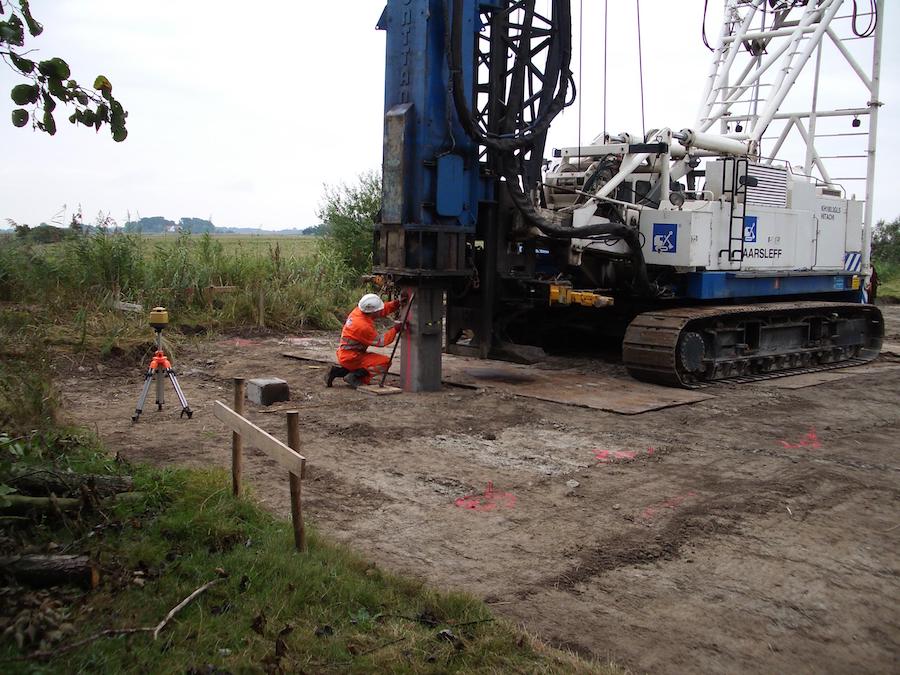When H-piles are driven into stiff clays, the dirt is normally caught between the flange and the web, and also comes to be compressed. In this application, the soil becomes part of the stack and also is lugged down with it. This core of compressed dirt can aid to press the surrounding dirt, enabling it to build resistance to additional variation.
What are both Types of Stacks?
There are two primary types of heaps: finish bearing and rubbing. End-bearing heaps transmit lots directly to a solid layer of soil or rock listed below the surface, while friction piles count on friction in between the bordering soil as well as the heap to support a lots.
These sorts of pile foundation stacks do not make use of casing and for this reason are less expensive. It is essential to have a close setup assessment given that no examination is feasible after they are set up. Sheet piles are not the types of pile structures used for load-bearing functions like concrete stacks.
What Are The Standard Types Of Structures?
The case may be kept in Setting or it may be taken out. The piles with casing locations are called relieved cast-in-situ concrete Piles and those without casing are called uncased cast-in-situ concrete heaps. When the foundation of the framework has loose soil, then the rubbing stacks are extended to a deepness that frictional resistance developed beside the heaps equals the lots beginning the stacks. A friction stack is generally utilized where tough structure strata are offered at higher deepness. Screw piles are steel kinds with a helix near the toe as a self-penetrating device. A screw pile may be outfitted with even more helices depending upon the soil condition.
Chelsea did 'due diligence' on two UCL winning managers at ... - GIVEMESPORT
Chelsea did 'due diligence' on two UCL winning managers at ....
Posted: Mon, 27 Feb 2023 21:00:00 GMT [source]
![]()
This sort of pile is extra helpful than precast heaps because of reduce of handling and also the removal of any kind of storage requirements. There is an opportunity for damage upon taking care of when moving precast heaps, as well as they require to be saved on site. Uncased stacks offer a more cost-effective cast-in-place pile, while cased stacks use a more secure and precise concrete positioning. Heaps remain in total 6 types if categorized based on their feature.

Rubbing Cum Bearing Piles
The under-reamed piles can additionally be made use of for sandy soils with a high water table. Stack driving is done by going down the hammer on the concrete plug. The casing is driven to the preferred depth and after that it is loaded with concrete. Though created to serve minimal tons and shorter lifespan, lumber piles are beneficial as a result of their accessibility in remote areas as well as reduced expense. End-bearing heaps-- the lower end of the pile is relaxed or anchored at a strong layer of dirt or rock. There are 2 sorts of the cast sitting heaps in secant piles.
- Air/steam impact stack hammers can be categorized as either single-acting or double-acting.
- Relatively talking, the bottom uplift pile builds up a lot more gets, which is additionally why the best bearing ability of the bottom uplift stack is better.
- Pre-cast concrete piles can be constructed in a practical place far from the building and VXCELPILING.CO.uk construction website and transported to the location where they will certainly be driven.
- Fresh water typically wears away steel gradually, unless contaminants exist.
Different from the normal uplift stack, the Q-- s curve of the bottom uplift stack has 3 areas, and also the limits of the 3 areas are 3605 kN as well as 8730 kN. When the tons is within 3605 kN, the variation increases gradually, and also the stack dirt user interface is in an elastic state. When the load is between 3605 and 8730 kN, the contour slope boosts somewhat, and this phase can be considered as a change area. The variation development price rises swiftly till the load exceeds 8730 kN, and the stack top displacement reaches 40 mm at 12,209 kN. The average variation worths of the MZ01 and also MZ04 examination piles were taken as the field surveillance outcomes of the typical uplift pile. The Q-- s curves of two type of uplift piles obtained from field tests and numerical simulation are received Fig. 6.
Advantages Of High-strain Dynamic Heap Screening
According to the field examination, the size of the typical uplift pile and also the bottom uplift heap is 22.5 m, as well as the constitutive design of the two type of piles was a straight elastic design. To remove the influence of the boundary impact on the simulation results and also consider the estimation effectiveness, the size, size and elevation Take a look at the site here of the soil model were 50 m × 50 m × 30 m. The top surface of the soil model was a free limit, the bottom surface was constrained by three sides, and the other 4 sides were normal restrictions. The pile soil interface was simulated by a charge feature, and also the friction coefficient was 0.5. The limited aspect design of the uplift heap is shown in Fig. 5. For a regular uplift stack, a consistent drawing force was applied on the pile top; for a lower uplift pile, a consistent compressive anxiety was applied to the stack base.
Warren Buffett Is Piling Into These 2 Beaten-Down Stocks - The Motley Fool
Warren Buffett Is Piling Into These 2 Beaten-Down Stocks.
Posted: Mon, 12 Sep 2022 07:00:00 GMT [source]